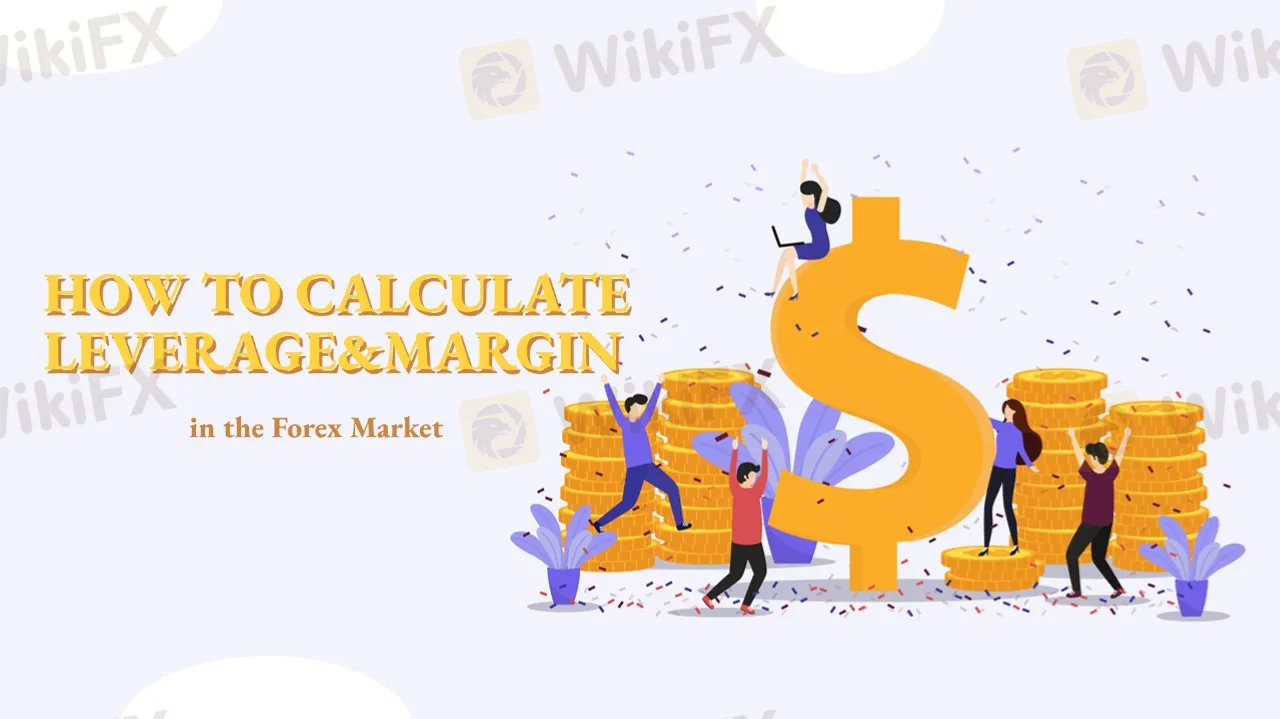How to Calculate Leverage and Margin in the Forex Market
Abstract:Leverage amplifies both potential profits and risks. Understanding how to calculate leverage and margin helps traders manage risks and avoid forced liquidation.

Leverage allows traders to control a larger trading position with a smaller amount of capital, effectively borrowing funds from a broker. Margin, on the other hand, is the amount of money required to open and maintain a position, serving as collateral. It is usually expressed as a percentage of the total trade value.
There are two types of margin:
Used Margin: The amount of capital currently allocated to maintain open positions.
Available Margin: The remaining capital in the account that can be used to open new positions.
For example, if a trader has a total account balance of $5,000 and $3,800 is used margin, then $1,200 remains available for new trades.
How to Calculate Leverage and Margin
The margin calculation formula is:
Margin= (Trade Volume×Contract Size×Asset Price)/Leverage
For example, if a trader wants to buy 3 lots of EUR/USD at an asset price of $1.10 with a leverage of 30:1, the required margin would be:
(3×100,000×1.10)÷30=11,000 USD
Another crucial metric is the margin level, which is calculated as:
Margin Level=(Equity/Used Margin)×100
A higher margin level indicates more available margin relative to borrowed funds, reducing risk. If the margin level falls below 100%, a margin call will be triggered, warning the trader to deposit more funds or reduce positions. If the margin level drops to 50%, the system may forcefully close positions to prevent further losses.
Using Leverage Wisely to Manage Risk
Leverage is a double-edged sword—it can magnify profits, but it also increases the risk of significant losses. For example, if a trader has $1,000 in their account and uses 100:1 leverage, they can control a $100,000 position. However, a 1% unfavorable price movement could wipe out their entire capital.
Therefore, it is crucial to use leverage cautiously. Beginner traders are advised to start with lower leverage (e.g., 10:1 or 20:1) and use stop-loss orders to limit risk. Practicing with a demo account can also help traders gain experience with margin trading before committing real capital.

Read more

Investors Beware! The Pound May Face a Downturn in the Second Half of the Year
Despite a recent short-term rebound in the British pound, a number of macroeconomic risks are emerging. Major institutions expect the pound to come under pressure in the second half of the year. Investors should closely monitor future policy and market dynamics.

J.P. Morgan: A Closer Look at Its Licences
J.P. Morgan is one of the most recognised names in global finance, operating in more than 100 countries and providing a wide range of services to governments, large corporations, institutions, and individuals. It has built a reputation over many years, supported by its international presence and broad regulatory coverage.

CMC Markets: A Closer Look at Its Licences
Choosing the right broker is a key decision for any trader. Regulation, safety, and transparency matter just as much as trading tools and fees. In this article, we will take a closer look at CMC Markets’ licences.

B2BROKER Partners with Website Studio Agency to Enhance Brokerages' Online Presence
B2BROKER and Website Studio Agency have joined forces to help brokers create high-performance websites quickly, enhancing digital presence and boosting client acquisition.
WikiFX Broker
Latest News
Dow futures slide 150 points as oil rises following U.S. bombing of Iran: Live updates
Asia-Pacific markets set to open lower as U.S. bombing of Iran escalates Middle East crisis
Oil at $100 a barrel? U.S. role in Iran-Israel fight fuels market jitters
Consob Blocks 7 Fraudulent Investment Websites Amid Ongoing Crackdown
MyFundedFutures Tightens Compliance Measures Following Regulatory Pressure
European markets start the week lower as Middle East crisis worsens
Top Wall Street analysts like these three stocks for long-term growth
Investors Beware! The Pound May Face a Downturn in the Second Half of the Year
Latest FCA Warning List Out! Beware & Protect Your Money
Before You Trust EterWealth with Your Money, Read This!
Rate Calc
